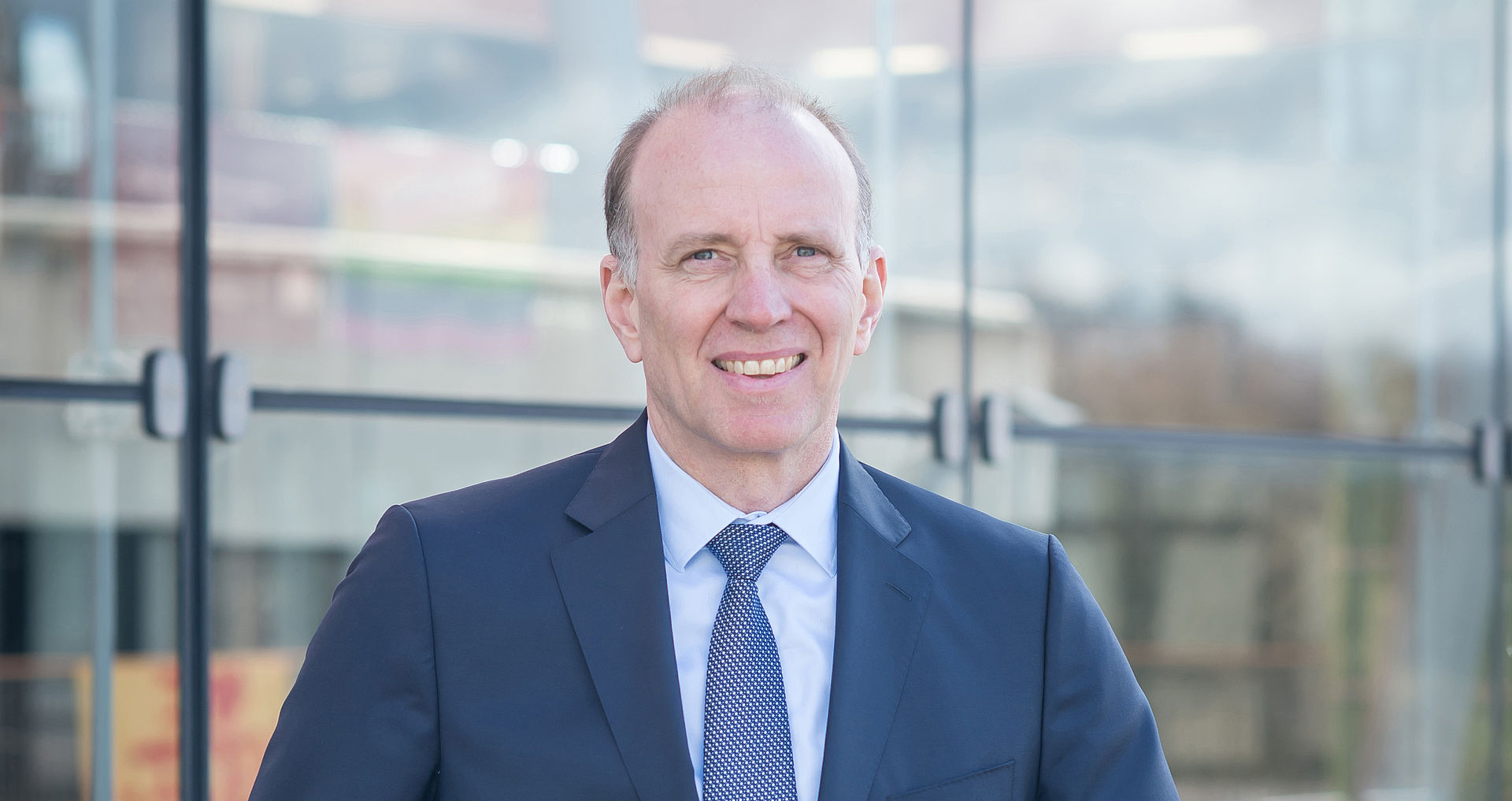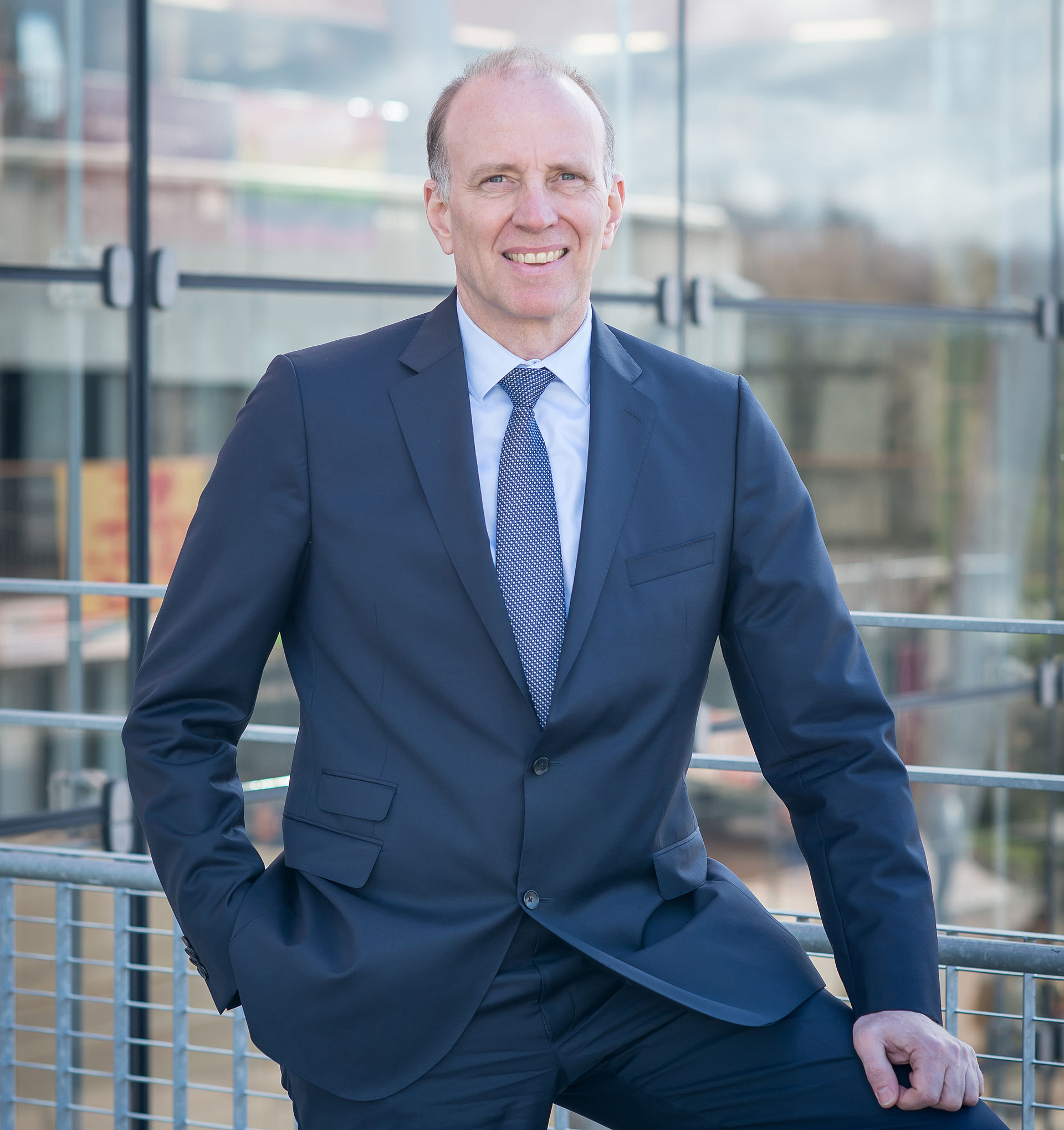November 24, 2020. A remarkable year is slowly coming to an end. It will be recounted and considered in detail in the usual annual reviews. I am sure that 12 October will also appear in these reviews. It was the day on which the research vessel Polarstern returned to Germany after an expedition lasting more than a year. At around 9 a.m., the icebreaker of the Alfred Wegener Institute (AWI) entered its home port of Bremerhaven with the morning floods.
A MISSION ACROSS ALL BORDERS
The AWI was in charge of organising an extraordinary expedition - MOSAiC. On 20 September 2019, Polarstern left the Norwegian port of Tromsø for the Arctic, where she settled in an ice floe and drifted towards the North Pole. A total of 442 people took part in the expedition, representing more than 80 institutions from 20 countries. The scientists of the expedition came from 37 countries. Their aim was to investigate the interactions between ice, oceans, atmosphere and life and to transfer these findings to climate models.
I was fascinated by this expedition right from the start. Not only because I regard it as existentially important for the future of humanity to have precise knowledge about changes in the climate and our environment, but also because this project, which unites peoples and cultures, can be compared with a similar space project: the International Space Station ISS. The construction of the ISS also brought together many nations who, despite their rivalries, were prepared to get something big off the ground.
A HARSH YEAR FOR THE GLOBAL CLIMATE
It is possible, however, that the MOSAiC expedition will not be given the appropriate importance in the annual reviews. After all, the omnipresent topic for 2020 is Corona. Do not misunderstand me: a pandemic is a terrible thing. People die, many others suffer - in terms of their health and as well as their economic well-being. But while we have almost exclusively addressed the topic of Corona in public, a year of horror has occurred for the global climate: 2020 could go down in history as the hottest year since measurements began. In addition, the number of extreme climate events has increased. Siberia experienced record temperatures; forests burned in Australia and California; the rainforest in South America is being cut down; and in the Arctic the ice is melting. And this is exactly what the AWI researchers have observed. I remember the MOSAiC expedition leader Markus Rex, who said in a TV report on 12 October: "We have seen the ice of the Arctic dying."
CLIMATE MODELS CALCULATED TOO OPTIMISTICALLY
The Director of the AWI, Antje Boetius, and I know each other. In Bremen, where we both live, it is part of the city's culture to have an attentive exchange between politics, business and science. During one of these conversations – a long telephone call in the summer – she was very serious and worried. She explained to me that the climate models have been calculated far too optimistically so far. And that the effects of melting sea ice on the rise in sea levels are far worse than the global research community has assumed over the past 20 years.
I must admit that the conversation made me very thoughtful. But it has also strengthened my conviction that the future of humanity and the survival of the planet depend on scientifically sound facts and the knowledge derived from them.
Antje Boetius told me that the MOSAiC expedition brought home a unique data set. She described this data as a "gift to humanity" and expressed her hope that this new knowledge can be used to make the right decisions for the future of our planet.
The problem is that humanity is running out of time. There are a number of climate researchers who believe that the Paris climate targets are difficult or impossible to achieve. At least not with the usual climate protection measures – such as lowering CO2 emissions, switching to alternative energies or climate-friendly living and eating habits. The core problem is that it is getting too hot on Earth. The effects that have so far ensured that the sun's radiation has had a moderate impact on our planet are being overridden by man-made changes in climate and the environment.
TECHNICAL CONCEPTS TO COMBAT CLIMATE CHANGE
We must therefore do everything in our power to strengthen the measures we have taken to protect the Earth. But after many discussions I have had with scientists and researchers on the subject, I have the feeling that these measures alone will not be enough to turn the tide in time. Global warming is progressing at an alarming rate. That is why I have commissioned an OHB team to conduct a study. Our engineers were to examine various concepts that could help to mitigate global warming. This included researching and evaluating existing concepts. The team also had the task of developing its own concepts.
The title of this internal study is "Solar Radiation Management" (SRM). In this study, concepts were examined that pursue the goal of either reducing the amount of radiation reaching the Earth, increasing the proportion of radiation reflected from the Earth's surface or otherwise reducing the effects of climate-relevant gases. These technological interventions are controversial. There are a number of moral questions that arise in this context: what are the long-term consequences of interventions in nature? Nature conservationists and animal welfare activists in particular rightly complain that the loss of natural habitats and biodiversity is due to human intervention
Our team has examined the following concepts in more detail:
- Stratospheric aerosol injection: the proportion of reflected light is increased, thus slowing down global warming.
- Artificial clouds over the oceans: this concept also increases the proportion of reflected light and thus helps to reduce the temperature of the oceans and thus the temperature of the atmosphere.
- Reforestation: billions of trees are planted to filter CO2 from the atmosphere.
- Reflective surfaces: roofs and streets painted white, deserts, fields and water surfaces covered with reflective materials ensure that a larger proportion of sunlight is reflected.
- CO2 storage in the ground: carbon dioxide emissions are captured and stored underground
- Sun shields in space: Countless probes with large shields are positioned in space to shade the Earth.
Our engineers have then assessed all of these technologies. They have come to the conclusion that stratospheric aerosol injection has the best prospects of combating global warming, taking into account various criteria. The method is very effective, affordable and can be implemented fairly quickly. One problem is that the aerosols could have consequences for the ozone layer and the troposphere, which have not yet been further investigated. All in all, however, this method is considered the most technically feasible.
PLANTING TREES IS NOT A SOLUTION
I was surprised that the much-discussed method of planting trees has virtually no effect on the goal of reducing the greenhouse effect. The main reason for that is that there is too little space available for this, not only to plant enough trees, but also to store them. A reduction in CO2 only occurs if the trees are stored after harvesting, for example in mines with no connection to the atmosphere. Otherwise, when the trees rot (or burn), exactly the same amount of CO2 would be released into the atmosphere again as the trees stored during their growth.
And what about the space-based concept? Well, solar shields would certainly be highly effective if it were possible to build the necessary probes within a limited time frame, transport them to a location some 1.5 million kilometres from Earth and operate them there. There, at what is known as Lagrange point 1, the gravitational forces of the sun and Earth acting on a body are in equilibrium, which means that spacecraft could be positioned there in a stable manner. According to our calculations, depending on the size of the deployed shields and the availability of the necessary technologies and carrier systems, between 31,000 and 1.8 million of these probes would be needed to shield around 2 % of the sun's energy. However, the effects on the local climate and flora and fauna have not yet been sufficiently researched.
DISCUSSION ON GEO-ENGINEERING MUST GET UNDER WAY
At this point in the discussion, however, it is not at all my intention to push a space-based concept to the fore. It would only have been somewhat surprising if a space company had not at least considered such a concept. No, I am more interested in starting a discussion. It is important to draw attention to the fact that we have not really got very far with the measures taken so far to limit or reverse global warming.
Above all, I would like to see a more open-minded view of the opportunities that science and technology already offer today. We should not restrict ourselves in our thinking about possible useful measures. Above all, we should base all our actions on science-based facts. And I have come to the conclusion, that geo-engineering technologies are still a source of anxiety for many people. They ask themselves: what are the consequences for the Earth when technologies are used on a global scale? But the climate crisis and the rising temperatures on Earth are making these technologies more and more necessary.
SATELLITES CAN MONITOR THE EFFECTIVENESS OF GEO-ENGINEERING
What is important here is a holistic view. The climate is a highly complex system formed by countless interacting factors. This is one of the reasons why interventions in this system must always be considered very, very carefully. That is why it is important that we consider space systems, such as Earth observation satellites, as important supporters of Earth-based methods. Their data and observations can provide evidence of the effectiveness and consequences of geo-engineering measures. For example, satellites could well measure how aerosol spraying affects the Earth's radiation budget, cloud formation or precipitation.
And as for the space-based concept of solar shields: in 2020, they would not be affordable, nor would we be able to bring so many probes to the right place in time. But what if we cannot stop global warming by other means? What if we find at the end of this century that we have waited too long to take action? As the global damage caused by climate change becomes more and more visible and the urgency of the problem increases, the costs would become less significant. It would be a matter of saving the Earth and also civilisation. Humanity would then in all likelihood once again strive across all borders to get something big off the ground.
Personal details:
Born in 1962, Marco Fuchs studied law in Berlin, Hamburg and New York. He worked as an attorney in New York and Frankfurt am Main from 1992 to 1995. In 1995, he joined OHB, the company that his parents had built up. He has been Chief Executive Officer of OHB SE since 2000 and of OHB System AG since 2011. Marco Fuchs is married and has two children.


